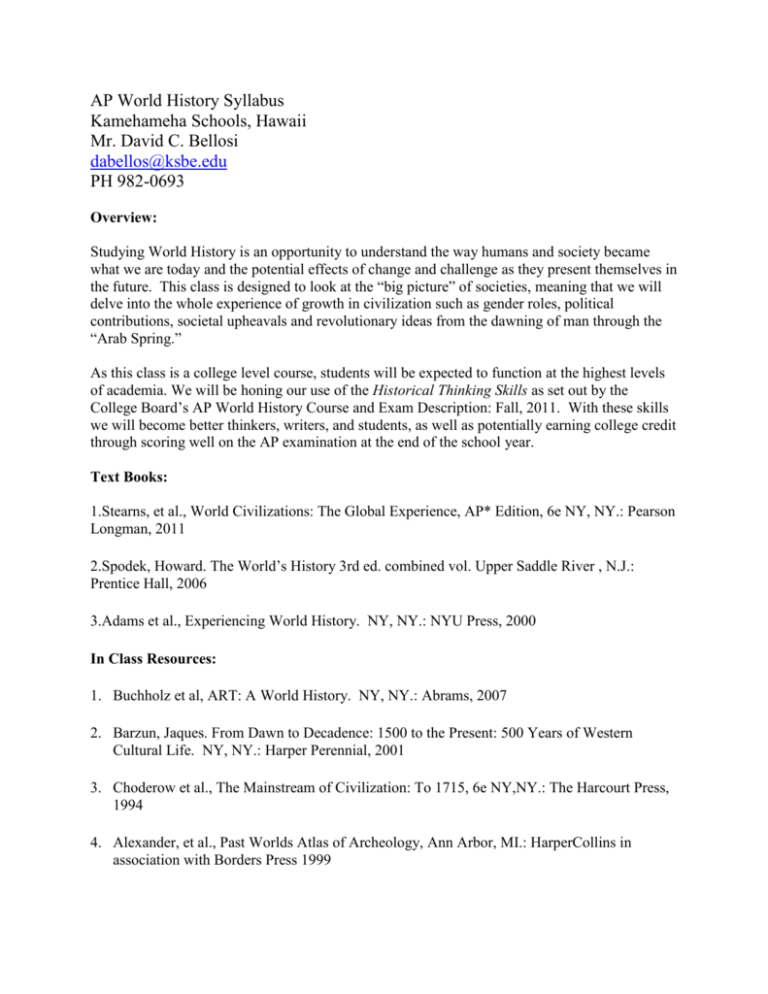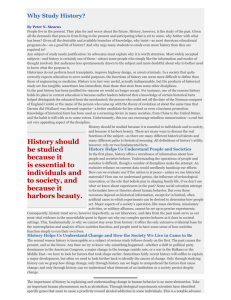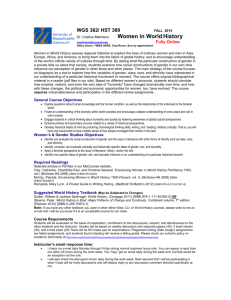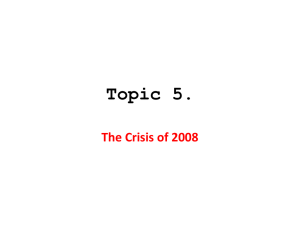
AP World History Syllabus
Kamehameha Schools, Hawaii
Mr. David C. Bellosi
dabellos@ksbe.edu
PH 982-0693
Overview:
Studying World History is an opportunity to understand the way humans and society became
what we are today and the potential effects of change and challenge as they present themselves in
the future. This class is designed to look at the “big picture” of societies, meaning that we will
delve into the whole experience of growth in civilization such as gender roles, political
contributions, societal upheavals and revolutionary ideas from the dawning of man through the
“Arab Spring.”
As this class is a college level course, students will be expected to function at the highest levels
of academia. We will be honing our use of the Historical Thinking Skills as set out by the
College Board’s AP World History Course and Exam Description: Fall, 2011. With these skills
we will become better thinkers, writers, and students, as well as potentially earning college credit
through scoring well on the AP examination at the end of the school year.
Text Books:
1.Stearns, et al., World Civilizations: The Global Experience, AP* Edition, 6e NY, NY.: Pearson
Longman, 2011
2.Spodek, Howard. The World’s History 3rd ed. combined vol. Upper Saddle River , N.J.:
Prentice Hall, 2006
3.Adams et al., Experiencing World History. NY, NY.: NYU Press, 2000
In Class Resources:
1. Buchholz et al, ART: A World History. NY, NY.: Abrams, 2007
2. Barzun, Jaques. From Dawn to Decadence: 1500 to the Present: 500 Years of Western
Cultural Life. NY, NY.: Harper Perennial, 2001
3. Choderow et al., The Mainstream of Civilization: To 1715, 6e NY,NY.: The Harcourt Press,
1994
4. Alexander, et al., Past Worlds Atlas of Archeology, Ann Arbor, MI.: HarperCollins in
association with Borders Press 1999
Additional Graphs, Tables, and Charts Sources:
(Firm), HarperCollins, Borders Press, and HarperCollins . HarperCollins past worlds atlas of
Archaeology. 1999.
Web: http://www.gapminder.org/.
Web: Previous AP World History Essay Documents, http://www.collegeboard.com
Primary Sources:
Documents in World History (DWH) CD-ROM, Upper Saddle River, N.J.: Prentice Hall,
2006
Stearns, Peter N, World History in Documents: A Comparative Reader. NY, NY. : New
York University Press, 1998
Recommended Reading:
Periodicals such as National Geographic, Discover, Scientific American and Archeology Today
will be encouraged and used throughout the course.
Teaching and Learning Methods through Four Historical Thinking Skills:
1.Crafting Historical Arguments from Historical Evidence
2.Chronological Reasoning
3.Comparison and Contextualization
4.Historical Interpretation and Synthesis
The Four Historical Thinking Skills as laid out by The College Board are listed above. Those
combined with the following types of lessons will be utilized on a frequent and regular basis.
Each of these types of lessons will be geared toward covering the specific content to the Periods
and Concepts of the AP World History curriculum. Some of the Historical Thinking Skills
addressed in each lesson are listed in parenthesis.
1. Teacher Directed Mastery Lesson
2. Glasser’s Circle(2, 3)
3. Inquiry/Discovery(2, 4)
4. Cooperative Groups(1, 2, 3, 4)
5. Charting/Graphic organizers (4, 2, 3)
6. Timeline(2, 3)
7. Political Cartoons: reading and creating (1, 2, 3, 4)
8. Mapping and Overlays(2, 3)
9. PERSIAN Charts: Political, Economic, Religious, Social, Intellectual/Arts and Near(2, 3)
Themes for the AP World History course and explanation of each: this is corroborated
through the use of above mentioned PERSIAN CHARTS
1. Interaction Between Humans and the Environment
1. demography and disease
2. migration
3. patterns of settlement
4. technology
2. Development and Interaction of Cultures
1. religions
2. belief systems, philosophies, and ideologies
3. science and technology
4. the arts and architecture
3. State-Building, Expansion, and Conflict
1. political structures and forms of government
2. empires
3. nations and nationalism
4. revolts and revolutions
5. regional, trans-regional, and global structures and organizations
4. Creation, Expansion, and Interaction of Economic Systems
1. agriculture and pastoral production
2. trade and commerce
3. labor systems
4. industrialization
5. capitalism and socialism
5. Development and Transformation of Social Structures
1. gender roles and relations
2. family and kinship
3. racial and ethical constructions
4. social and economic classes
Periods and Concepts
(Approximate days and dates-5 classes of Block Schedule; 08/05-08/17)
1.Technological and Environmental Transformations: to c. 600 B.C.E.
1.Big Geography and Peopling of the Earth
2.Neolithic Revolution and Early Agricultural Societies
3.Development and Interactions of Early Agricultural, Urban, and pastoral Societies
4.Americas: Olmec, Toltec, Chavin, Mayan, Mississippian Mounds
Reading assignments this section:
• Part I, Stearns pp. 2-31
• Part I, Adams 28-48, 66-76, 86-89
• DWH & Stearns: Compare and Contrast 10 Commandments, Hammurabi’s Code, Gilgamesh
excerpts comparing modern thought about life and death, Egyptian Book of the Dead,
Bhagavad Gita, Daily Life in Egypt, Hebrew Scriptures
• Chapters 5 & 14 of Guns, Germs, and Steel
PERSIAN Charts: River Valley Civilizations
Writing topic(s) and Projects:
• Using maps and data from Alexander, et al., Past Worlds Atlas of Archeology, Compare and
Contrast Civilization Parameters of Major River Civilizations: discuss the possibilities of why
those locations are the primary roots and why civilization sprung up there. Where else could it
have arisen?
• Compare and Contrast the Popol Vuh with Baghavad Gita
(Approximate days and dates-11 classes of Block Schedule; 08/19-09/20)
2.Organization and Reorganization of Human Societies: c. 600 B.C.E to c. 600 C.E.
1.Development of Religion and Cultural Traditions
2.Development of States and Empires
3.Trans-regional Networks of Communication and Trade.
Reading assignments this section:
• Part II Stearns pp. 38-118
• Adams pp. 99-154, 170-173
• DWH & Stearns: Homer’s Iliad & Odyssey, Plato’s Republic, Confucius Analects, Sima Qian:
The Historian’s Historian Writes about the Builder of the Great Wall, Dhammapada:
Buddhism, Asoka: How a Life was Turned Around, Fa-Hsien: A Chinese Perspective on Gupta
India, Aristotle: against Communism, Aristotle: The Virtue of Mean, “The War With Catiline”:
Sallust’s Insights Into the Roman Rupublics Decline, Transition from Republic to Principate:
Tacitus, All Roads Lead to Rome, Stoic Philosophy, Sidonius Appolinaris: Rome’s Decay and a
Glimpse of the New Order, Rise of Christianity, St. Augustine of Hippo: The Just War, Paulus
Orosius: History Against the Pagens, St Benedict,
PERSIAN Charts: Europe: Classic Greece, Classic Rome Asia: China through Han Dynasty
and India through Gupta
Writing topic(s) and project:
• Group Interview and presentation of each major religion
• Compare and contrast the origins of Judaism, Christianity and Islam versus that of Buddhism
and Hinduism. Also include comparisons of the different branches/sects as well.
• Compare and Contrast Han Dynasty and Roman Empire
• Some Historians and the AP College Board place the founding of Islam in the 600 CE to 1450
CE aka Regional and Trans-Regional section of history while some feel it should be in
Organization and Re-Organization of Human Societies (600BCE - 600 or 700 CE). The latter
would include Judaism as well as Christianity. Write an essay answering the following
questions What does each title of era mean, what topics do the time periods contain and
which do you think would be appropriate for and why?
(Approximate days and dates-16 classes of Block Schedule; 09/22-11/17)
3.Regional and Trans-Regional Interactions: c. 600 C.E. to c.1450
1.Expansion and Intensification of Networks of Trade and Communication
2.State Continuity and Innovation and State Interactions
3.Increased Economic Production and Its Consequences
Reading assignments this section:
• Part III, Stearns pp. 126-340
• Part III, Adams pp. 185-250
• DWH & Stearns: The Thousand Nights and One Night, Ibn Battuta, The Book of Ser Marco
Polo, Kingdom of Ghana was written by Al-Bakri, Visit to Cairo in 1324 by the King of Mali,
Mansa Musa, was written by Al-Umari, Race and Slavery in the Middle East, Bernard Lewis,
Urban II (1088-1099): Speech at Council of Clermont, 1095, (Five versions of the Speech)
Murasaki’s 11th-century The Tale of Genji, Magna Carta
PERSIAN Charts: Tang and Song, Mongols, Maya, Aztec, and Inca
Writing topic(s) and project:
• Photo Map Marco Polo and Ibn Battuta’s Journeys: Evidence why their contemporaries
reception of these two journeys has been different from each other’s
• Graphic Organize the diaspora of Islam
• “Continuity and Change Over Time”: How was trade between Europe, Asia, and Africa
affected by issues such as Pax Mongilica, Crusades, and Muslim expansion?
• Using Archeological and Anthropological research, students will create a presentation of
evidence of trade between N. America, C. America and S. America prior to contact.
• Students will research Muslim first accounts and Christian first accounts of the Crusades.
Then, they will write a persuasive essay on either perspective including refuting the other sides
justification.
1. Jan, Halsall. "A CHRISTIAN/MOSLEM DEBATE OF
THE 12TH CENTURY." Fordham University. Internet
Medieval Sourcebook, 1996. Web. 5 Mar 2012.
<http://www.fordham.edu/halsall/source/christ-muslimdebate.asp>.
2. Stearns, Peter N. World History In Documents, A
Comparative Reader. NYU Press, 1998. 139-150.
a. Christian Account(139-144)
b. Muslim Accounts(145-150)
(Approximate days and dates-16 classes of Block Schedule; 11/21-02/02)
4.Global Interactions: c. 1450 to c.1750
1.Globalizing Networks of Communication and Exchange
2.New Forms of Social Organization and Modes of Production
3.State Consolidation and Imperial Expansion
Reading assignments this section:
• Part IV, Stearns pp. 342-504
• Part IV, Adams pp. 259-308, 321-323
• DWH & Stearns: Journals of Christopher Columbus, “Our Kingdom is Being Lost” (Nzinga
Mbemba), The Laws for the Military House (Buke Shohatto), Castiglione’s Courtier, Utopia by
Thomas Moore, 95 Thesis by Martin Luther,
PERSIAN Chart: European Absolutism, Gun Powder Empires, Colonialism in South and North
America
Writing Topic(s) and Projects:
How and where did trade lead to colonization? Students will review a case study in
conjunction with Hawaiian History Department at Kamehameha Schools on the effects of
sugar trade throughout Oceania and in particular the Hawaiian Islands.
Evaluate the Colombian Exchange.
How do the European Renaissance, Age of Discovery, Reformation, and the Scientific
Revolution relate to each other?
Analysis Essay over the cause and effects of Australia/New Zealand and India as a colony of
Great Britain
Compare writings by Jared Diamond and Jack Goldstone regarding the causes of European
advances and dominance over the Americas, Africa and Asia:
1. Why Europe?: the rise of the West in world history, 1500-1850. McGraw-Hill Higher
Education, 2008, 2008. 192.
Chapters: Introduction,1,2 and Conclusion
2. Diamond, Jared M. Guns, Germs, And Steel, The Fates Of Human Societies. 1. New
York: W. W. Norton & Company, 1999.
Chapters: 3-6
(Approximate days and dates-16 classes of Block Schedule; 02/06-04/02)
5.Industrialization and Global Integration: c. 1750 to c. 1900
1. Industrialization and Global Capitalism
2. Imperialism and Nation-State Formation
3.Nationalism, Revolution, and Reform
4.Global Migration
Reading assignments this section:
Part V, Stearns pp. 512-634
Part V, Adams pp. 346-369, 386-387
DWH & Stearns: What is the Third Estate (The Abbe Sieyes), Communist Manifesto by Karl
Marx & Friedrich Engels, White Man’s Burden by Rudyard Kipling, Use the Barbarians to fight
the Barbarians (Wei Yuan), Treaty of Nanking 1842, Letter to the Emperor of Japan (President
Fillmore), Declaration of the rights of Man, Social Contract by Rousseau, Declaration of
Independence by Thomas Jefferson, Declaration of the Rights of Women by Mary Wollstonecraft,
Wealth of Nations (Adam Smith),
PERSIAN Chart: Pre and Post Meiji Restoration, Pre and Post European
Revolutions/Unifications
Writing Topic(s) and Projects:
Compare and Contrast Mercantilism, Capitalism, and Socialism
What affect did the Industrial Revolution have on society for the industrial nations and the
populations of the developing nations around the world?
What affect did colonialism have on local populations in Africa, India, and SE Asia?
(Approximate days and dates-16 classes of Block Schedule; 04/04-05/16)
6.Accelerating Global Change and Realignments: c. 1900 to Present
1.Science and the Environment
2.Global Conflicts and Their Consequences
3.New Conceptualizations of Global Economy, Society, and Culture
Reading assignments this section:
Part VI, Stearns pp. 636-874
Part VI, Adams pp. 400-470
DWH & Stearns: A United Germany in a United Europe (Helmut Kohl, 1990), Saddam’s
Invasion of Kuwait: Two Rationales, A Black Man Confronts Africa (Keith Richburg), A Market
Economy for Socialist Goals (Deng Xiaoping),The Balfour Declaration, What a Communist
Ought to be Like (Nadezhda K. Krupskaya), The Soviet Victory (Joseph Stalin), Two Utterly
Different Standpoints (Jawaharlal Nehru),
PERSIAN Chart: Russia/USSR/Russia, China/PRC, Middle East, Sub-Saharan Africa
Group Seminar Projects:
Analyze the role Oceania played in the outcome of World War II and the Cold War.
Explain how the genocide of Armenians in the Ottoman Empire and Jewish people of the
Third Reich in Germany during the first half of the twentieth century may have affected
international political decisions in Yugoslavia, Rwanda and the Sudan?
Map, analyze, and explain the effects of the Cold War on Developing Nations Independence.
What are the international implications of the Green Movement?
Chart/Graph and explain the Middle East’s role in the world economy.
Analyze the impact of the multinational corporations and rapid technological advancement
(Social Networks and Arab Spring) on democratic movements in the world
Choose a Sub-Saharan country to present an analysis of their history before during and after
European imperialism.
Analyze the rise of indigenous peoples and their movement to self-rule with specific attention
to India and Mahatmas Gandhi.
What were/are the implications of political movements and revolutions in Latin America
Assignment Policy:
As this class is a college level class, assignments are expected to be in on time and of the highest
quality. Late assignments will only be accepted at the discretion of the instructor and messy
assignments may not be accepted at all. Missing assignments will be treated as zero credit for
that assignment and the appropriate people will be notified. A continuous pattern of missing/late
assignments will be viewed as a “behavior” problem and the student will be referred to the
principal or vice principal with a “Student Referral” for the administration to take action
according to school policies.
If a student is absent on the day that the assignment is due, the student must contact the
teacher(s) via phone call or email to request an extension or to make alternate arrangements by
7:45 a.m. In the event of early release, pre-arranged absences, etc., all assignments are due prior
to student’s departure unless other arrangements were made with the teacher in advance.
This class prepares you to take the AP Exam. Your textbook is only a reference point. You are
expected to go beyond this reference point as needed to be able to paint a clearer picture in your
essays. Also, you are required to take notes on your reading and keep up with all the vocabulary.
You are also required to keep up on current events at the World, National, State, and Local level.
This is a college level class and you are expected to work on your own a great deal in order to be
able to earn an “A”.
*AP Exam is on the morning of May 17th and Final Exams are May 21-23









